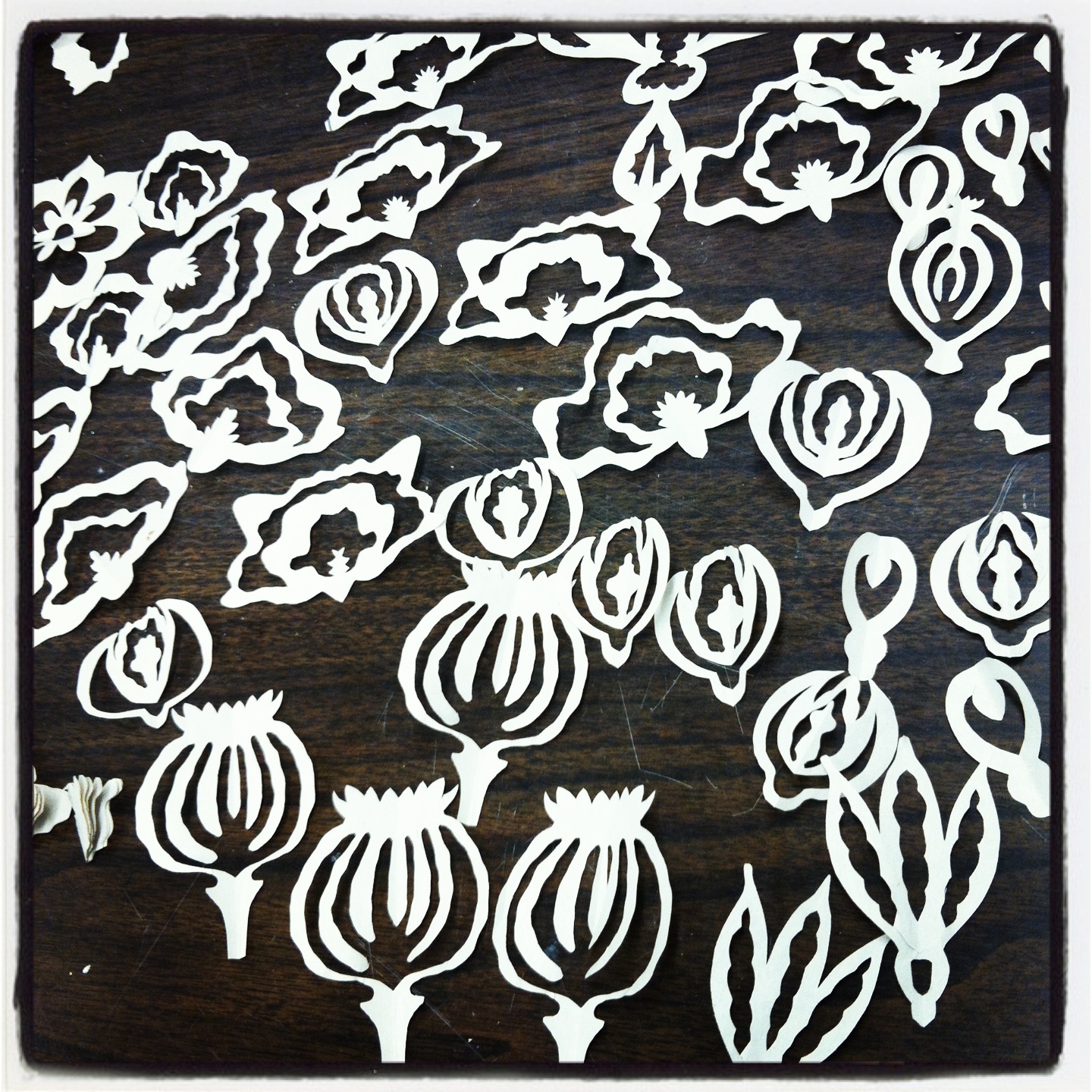I am currently taking an instructional development class in preparation for teaching next semester. One of our assignments was to create a ten minute micro lesson. Here is the handout that I created to accompany the lesson.
Paper Stencils Micro Lesson
Instructor: Kelly Daniels
University of Massachusetts Dartmouth
Fall 2014
Using Paper Stencils to Create Pattern and Texture on Clay
Objectives:
1. Identify papers to be used for stencils.
2. Learn basic methods for creating stencils.
3. Determine when and how to apply stencils to clay.
4. Discover what materials to apply over the stencils.
Materials:
1.5” Wide Hake Brush
Unprinted Newsprint Paper
Slips, underglazes, engobes.
Water
Scissors
X-acto type knife
Pin tool
Procedures:
1. Determine paper to be used. For this demonstration I will be using unprinted newsprint.
2. Draw a shape on your stencil. This can be symmetrical or asymmetrical. For multiples, fold the paper and draw shape starting at the fold line “paper-doll style.”
3. Using scissors or a blade, cut out the stencil. Either, or both, positive or negative images may be used as the stencil.
4. a)Dipping method: Gently dip stencil in water and carefully place on leather hard clay surface.
b) Spray bottle method: Using a fine mist spray bottle, first spray the surface of the clay where you will place the stencil. Next carefully lay the stencil down on the clay and spray again to wet the stencil.
5.Gently smooth out wrinkles. Use a wet finger, brush, or spritz from a spray bottle to lift, smooth, or readjust the stencil.
6. Allow the stencil to begin to dry until it is just damp and lighter in color. You will see the paper change colors as it begins to dry out. (See example of color change in above images.) You don’t want the paper or clay to completely dry out.
7. Using a soft bristle brush apply slip or underglaze to your piece. Use one to three coats depending on the density of color or amount of texture you desire. When applying multiple coats allow the previous coat to dry to leather hard before applying the next coat.
Note: airbrushing can also be used to apply slip or underglaze and allows for nice gradations of color. However, this will not be demonstrated.
8. After applying slip your piece may have soaked up a noticeable amount of moisture so be careful not to move or cause the piece to warp.
9. Allow your piece to dry to leatherhard again.
10. At this point you can start applying more stencils if you wish to achieved layered effect.
11. When all stencils and slips have been applied and your piece has dried to leather hard you can start to remove stencils. Usually the areas where the stencils are will have dried faster allowing for easier visibility. To make the stencils even easier to see a hair dryer may be used briefly to dry the stencils more. Use a sharp blade, like an x-acto knife, or needle tool, to gently lift of the edge of the stencil, then grab ahold of it and peel it off. Throw away the stencils, they cannot be used again.
12. Many interesting effects can be achieved by using multiple stencils to create patterns and employ shallow relief and overlapping images.
Definitions:
Stencil - a thin sheet of cardboard, plastic, or metal with a pattern or letters cut out of it, used to produce the cut design on the surface below by the application of ink or paint through the holes.
Leather hard - clay which has reached a stage of dryness that is the consistency of leather or hard cheese.
Slip - liquid clay: can be made from the clay body you are using or formulated from a recipe and can also be colored using oxides or stains.
Underglaze – a commercially prepared product similar to slip but with a lower clay content. Comes in many colors.
Additional Resources:
www.ceramicartsdaily.org
Enter paper stencil in the search bar and quite a few resources will come up.
Zygote Blum on You Tube
Meredith Host on You Tube
Due Date (Hypothetical):
October 1st Greenware
October 14th Glazed and fired
















